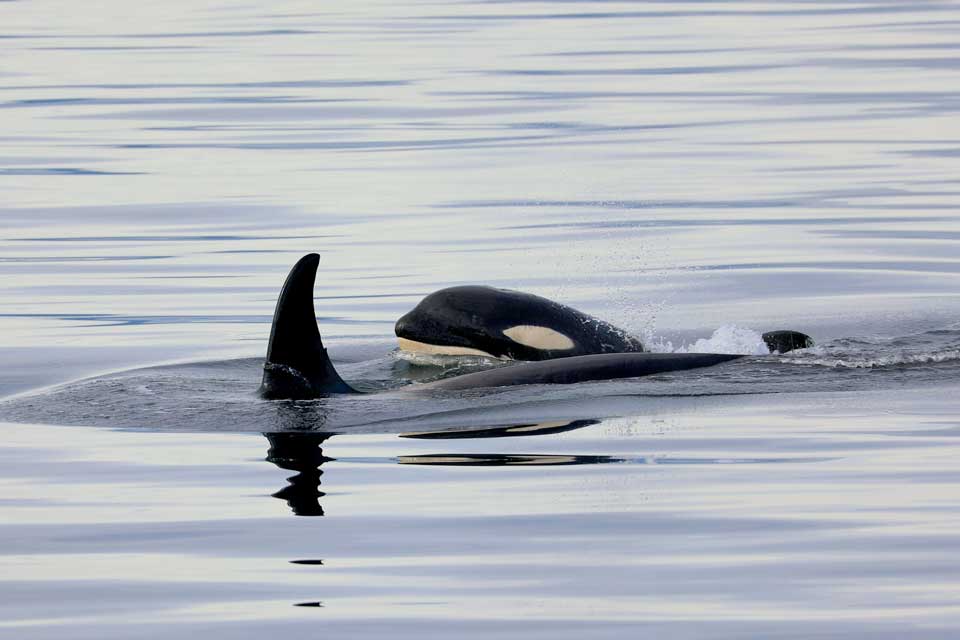Orcas are an apex predator, which means they a species at the top of the marine food chain. They are the largest of the dolphin family and the most widely distributed of all cetaceans (whales, dolphins and porpoises), occurring in all oceans of the world.
Orcas are black with white undersides and eye patches, which serves as camouflage. They have gray or white saddle patches behind the dorsal fin. Markings vary amongst individuals and populations and can sometimes be used to identify individuals. Males are larger than females and have straighter dorsal fins.
There are several populations and subspecies of orcas. There are three main ecotypes in the North Pacific and are not known to interbreed:
Resident
There are four populations of resident orcas in the North Pacific (Southern Residents, Northern residents, Southern Alaska residents and Western Alaska residents). The tops of their dorsal fins are rounded and they have a variety of saddle markings. They are generally fish eaters (mostly salmon).
Transient
Transient orcas have pointier dorsal fins and two types of saddle markings. They live in small groups in the North Pacific. Their diets are more varied and include squid and marine mammals such as seals, sea lions and porpoises. Transient orca habitat sometimes overlap with Resident and Offshore orcas.
Offshore
Offshore orcas have rounded dorsal fins and have smaller bodies. Their saddle patches are usually fainter. They have a large range and occur several miles offshore. They generally eat fish, including sharks.

Orcas need to stay semi-awake while they sleep so they can surface to breathe. Because of this, only half of their brain sleeps at a time.
All oceans of the world
Open seas and coastal waters. They are most abundant in colder waters, but they are also found in tropical and subtropical waters.
Fish, squid, marine mammals
Humans
Orcas are very social and live in pods up more than 20 animals. Pods often contain multiple generations. Larger groups occasionally form for social interaction, mating and season hunting. They often coordinate while hunting for prey.
They communicate with a variety of clicks, whistles and calls which are unique to each pod. Sounds are learned and shared amongst individuals. They also coordinate to hunt and use echolocation (sonar) to find and catch prey.
Orcas give birth to single calves after 15-18 months. There is no distinct calving season. In some populations, birth rate is estimated at every 5 years for a period of 25 years before going through menopause (some toothed whales and humans are the only species known to go through menopause).
Primary threats include entanglement, chemical contaminants, vessel noise and disturbance, lack of food (due to overfishing or habitat loss), oil spills, and capture for captive display (outside the US). Historically, orcas were targeted for commercial hunting and culled to protect fisheries.
All orca populations are protected under the Marine Mammal Protection Act. In Alaska, some orcas occurring in Southeast Alaska belong to the Southern Resident population, which is listed as endangered under the Endangered Species Act. The most recent population census in 2019 counted only 73 Southern Resident orcas.
Species recovery depends upon successful management including designation of critical habitat, preventing vessel strikes, salmon (preferred prey) recovery, minimization of contaminants, and oil spill response.